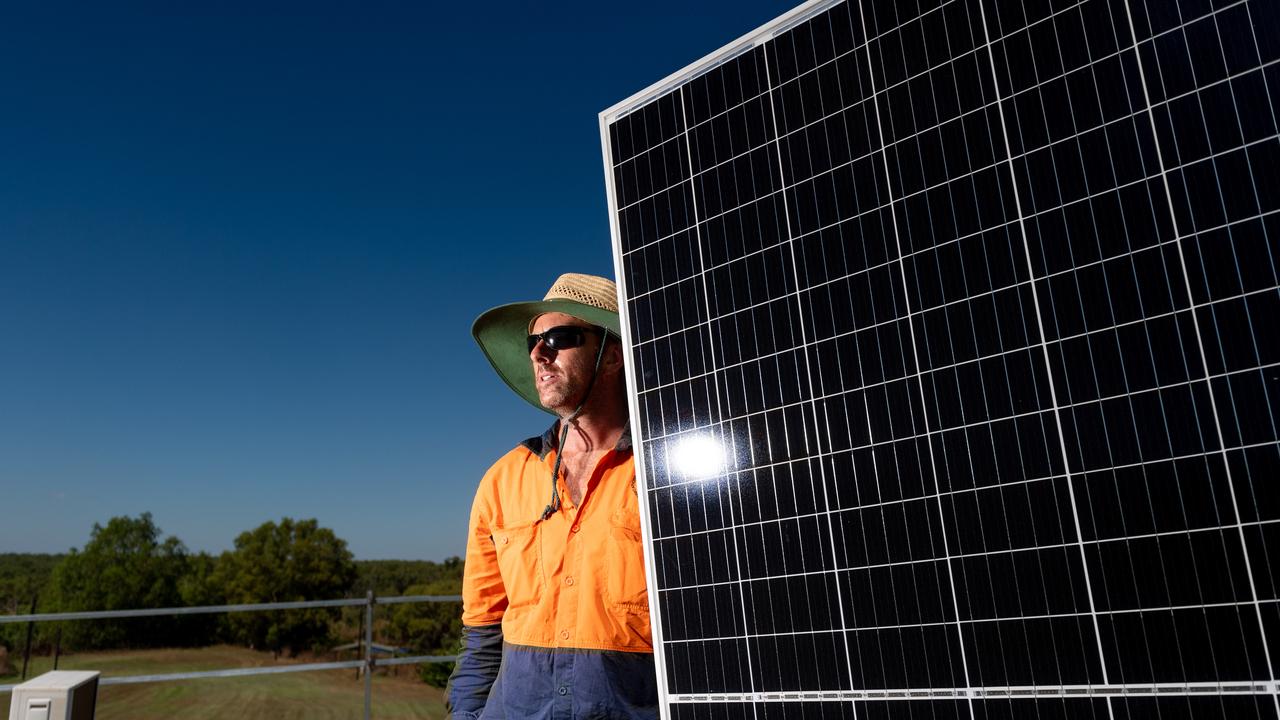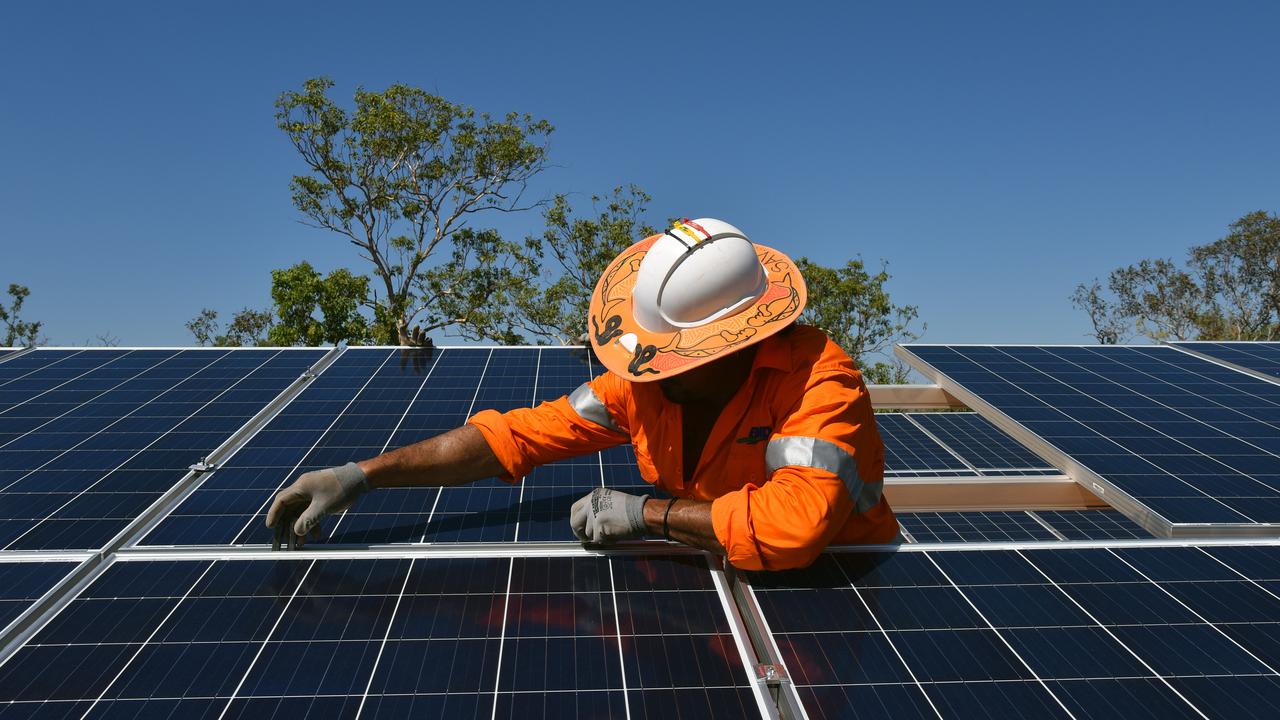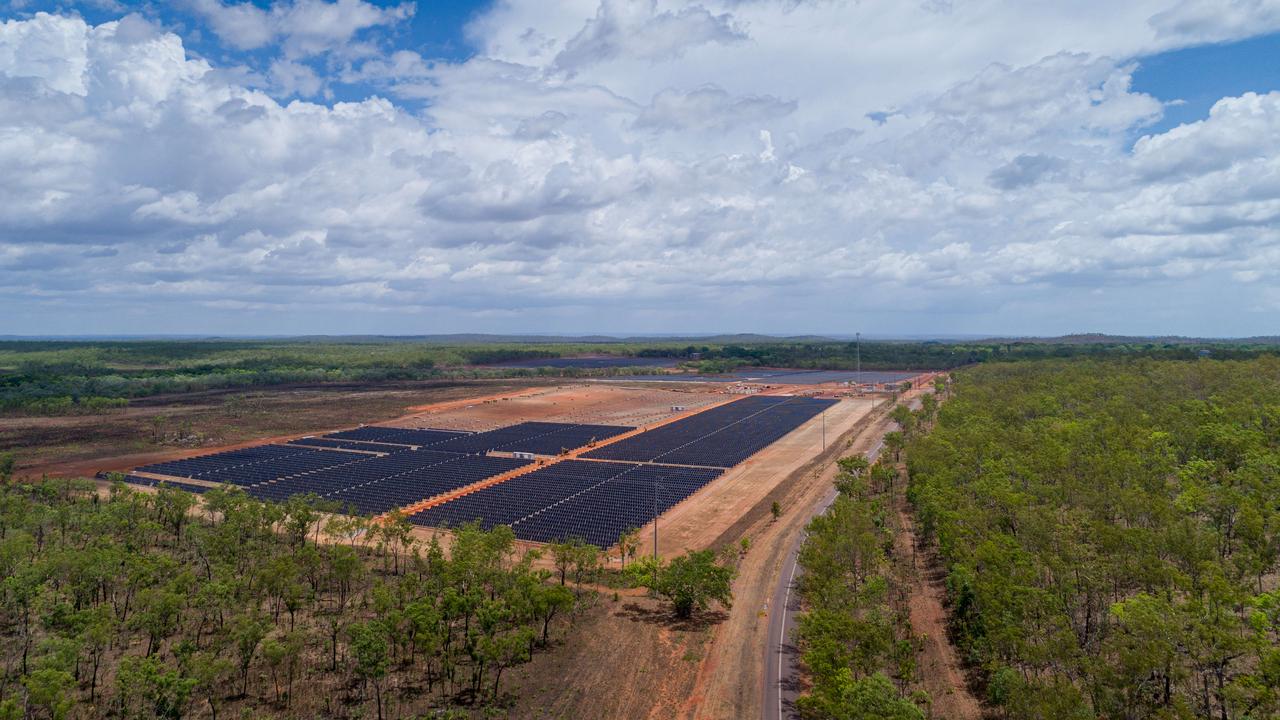Cunningham: Pie in the sky 2030 renewable energy target looks to remain but a dream for NT
A national energy regulator report has confirmed Power and Water has put to bed the mad, full steam ahead approach to renewables – even if the government is still pretending 50pc by 2030 is achievable, writes Matt Cunningham.

It was Territory Labor’s signature environmental and energy policy at the 2016 election.
A pledge to achieve 50 per cent of our domestic electricity generation through renewable sources by 2030. By 2017 the Labor Government had released a road map to achieve this goal. It was promising “cheaper, greener, renewable energy”.
Few people understand energy systems, so it’s little surprise this plan was being met with overwhelming positivity.
Those of us who questioned its potential cost or impact on the stability of our electricity grid were scoffed at.
More than seven years on this ambitious – perhaps ludicrous – plan has been quietly shelved. There’s been no official announcement, of course.
Chief Minister Eva Lawler was still sticking to the 50 per cent commitment at a press conference on Thursday.
The CLP also supports 50 per cent by 2030.
But the death of a policy that was never going to be achieved was effectively confirmed in a report handed down by the Australian Energy Regulator on April 30.
The report determines how much revenue Power and Water can recover from its consumers for using its network.
“PWC has integrated some consumer preferences into its revised proposal with support for investment in the energy transition through enabling large-scale renewables through contingent projects and Consumer Energy Resources (CER) through integration investment,” it says.

“PWC says it has opted for a measured and staged approach to investment in major projects such as future networks CER integration and ICT including operational technology uplift, in response to consumer feedback on support for the transition but affordability concerns due to increasing cost-of[1]living pressures.”
This statement is significant for two reasons.
First, it confirms that Power and Water has put to bed the mad, ideologically driven, full steam ahead-approach to renewables, even if the government is still pretending 50 per cent by 2030 is achievable.
This should be unsurprising given every Power and Water employee with the most basic knowledge of electricity generation knows how difficult their job has become as they try to integrate intermittent energy sources into the grid while keeping the lights on.
Let’s spare a though for Michael Thompson and Tim Duignan, the former chief executives at Power and Water and Territory Generation who were sacked by the NT Government for failing to achieve this impossible task after the lights went out in Alice Springs in 2019.
Second, it shows a shift in consumer sentiment as the public cottons on to the fact we’ve all been conned when it comes to the green dream of “cheaper, cleaner” renewable energy.
This might be because the promises of our politicians have failed to align with our lived reality.

Three huge solar farms built at Manton Dam, Batchelor and Katherine still sit almost idle, while the cost of our electricity is rising.
Consumers in the Territory have largely been shielded from the cost implications of our energy mess.
Because Power and Water is a government-owned corporation, the government has been able to limit household electricity price rises to CPI. (Larger businesses have not been so lucky).
But that cost burden is being shifted to the budget’s bottom line.
Each year the government makes a Community Service Obligation (CSO) payment to Power and Water to compensate for losses made implementing the government’s social policy.
The latest budget shows an annual increase in the CSO of $55.2 million for the next financial year, bringing the payment to a record $164.2 million.

What’s the primary driver of that increase? The answer is in Power and Water’s Statement of Corporate Intent from 2022/23, which notes the corporation “intends to apply for greater levels of CSO funding specifically in relation to costs it is currently absorbing due to renewable generation connections”.
Should we do the calculation now about the number of nurses, teachers, school classrooms, hospital beds, et cetera that this money could have funded?
Or, if the goal of this policy is to reduce the impact of climate change – because scrutinising renewable energy generation shouldn’t be linked with the denial of a warming planet – it might be better to consider the mitigation measures we could have implemented.
How many trees could we have planted, or shade structures (with the right vines of course) could have been erected to cool our towns and cities with the literally hundreds of millions of dollars we are spending in pursuit of this impossible dream?
Instead, the government continues to parrot a policy that comes at a huge cost, threatens our energy security, and even if achieved (and it won’t be) would have such an infinitesimally small impact on global emissions it would effectively be zero.





